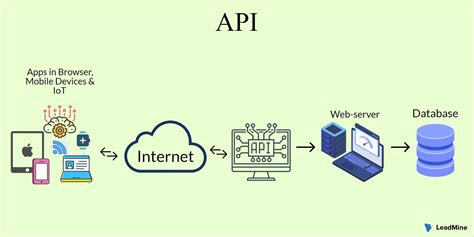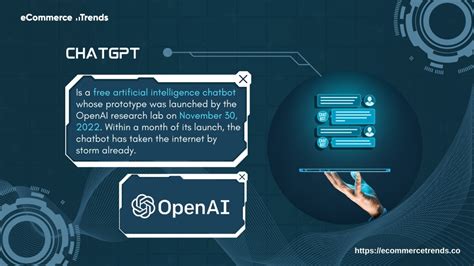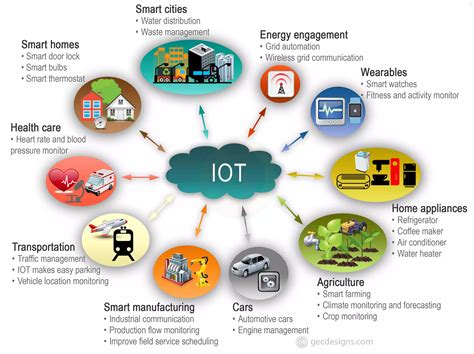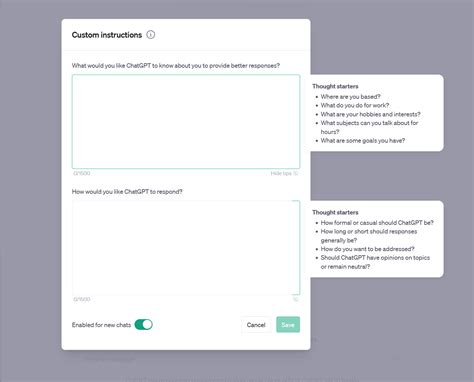Breaking News


Popular News


Explore the power of ChatGPT API in IoT, advantages, customization, security, and real-world applications. Enable conversational interfaces with this innovative technology.In today’s rapidly evolving digital landscape, the convergence of artificial intelligence and the Internet of Things (IoT) has opened up exciting possibilities for creating more intuitive and interactive experiences. One such innovation that’s making waves is the integration of the ChatGPT API with IoT devices, enabling the development of conversational interfaces that can revolutionize how we interact with technology.
In this blog post, we’ll delve into the world of ChatGPT API and IoT, exploring how these technologies can be seamlessly integrated to enable natural and conversational interactions with devices. From gaining an understanding of the ChatGPT API and its potential applications in the IoT ecosystem to exploring the advantages of conversational interfaces, we’ll examine the various facets of this groundbreaking integration. Additionally, we’ll also discuss the customization of ChatGPT for IoT and the crucial security considerations that must be addressed when implementing conversational interfaces.
Join us as we uncover the potential of ChatGPT API and IoT, and discover the real-world applications and use cases that are transforming the way we interact with technology.
Contents

ChatGPT API is a powerful tool that enables developers to integrate conversational interfaces into their applications with ease. This API allows for the generation of human-like text responses, making it possible to create chatbots, virtual assistants, and other interactive interfaces that can carry on conversations with users. With the ChatGPT API, developers can access OpenAI’s advanced language model to create engaging and natural interactions.
Using the ChatGPT API, developers can harness the power of state-of-the-art language processing capabilities to enable conversational interfaces in their IoT devices. This opens up a world of possibilities for creating smart devices that can communicate and interact with users in a more intuitive and human-like manner. Whether it’s a smart home device, a connected car, or a wearable device, the ChatGPT API can enhance the user experience by providing intelligent and responsive interactions.
Integrating the ChatGPT API with IoT devices can revolutionize the way users interact with technology, bringing a new level of convenience and seamless communication. With the ability to understand and generate natural language, IoT devices can become more intuitive and user-friendly, providing a more personalized and engaging experience for users.

The integration of ChatGPT API with IoT devices has opened up a world of possibilities for creating conversational interfaces in various smart devices. With the use of ChatGPT, IoT devices are now able to interpret and respond to human language, making the interaction between humans and machines much more intuitive and natural.
One of the key advantages of integrating ChatGPT with IoT devices is the enhanced user experience it provides. Users can now communicate with their smart devices through natural language, allowing for a more seamless and personalized interaction. This integration also enables IoT devices to understand commands and queries in a more sophisticated manner, leading to improved functionality and usability.
Moreover, the integration of ChatGPT with IoT devices opens up opportunities for creating customized experiences tailored to specific user needs and preferences. By leveraging the capabilities of ChatGPT, IoT devices can be programmed to adapt and learn from user interactions, providing a more personalized and contextually relevant experience.
When it comes to security, the integration of ChatGPT with IoT devices requires careful consideration of privacy and data protection measures. As IoT devices become more deeply integrated into our daily lives, it is crucial to ensure that the conversational interfaces powered by ChatGPT are secure and resilient against potential vulnerabilities and threats.

Conversational interfaces offer numerous advantages for users, businesses, and organizations. One of the primary benefits is the convenience and ease of use that they provide. By allowing users to interact with technology through natural language, conversational interfaces eliminate the need for complex user interfaces and learning curves. This can lead to increased user satisfaction and engagement.
Another advantage of conversational interfaces is their ability to streamline processes and tasks. Users can quickly and efficiently accomplish tasks such as placing orders, scheduling appointments, or obtaining information without having to navigate through multiple screens or menus. This can save time and reduce friction in the user experience.
Additionally, conversational interfaces have the potential to improve accessibility for individuals with disabilities. By providing alternative means of interacting with technology, such as voice commands or text-based conversations, conversational interfaces can make digital experiences more inclusive and equitable.
Furthermore, conversational interfaces can offer valuable insights and data for businesses. By analyzing conversational interactions, organizations can gain a better understanding of user preferences, behavior patterns, and needs. This information can be used to personalize experiences, improve products and services, and make more informed business decisions.

Customizing ChatGPT for IoT integration allows developers to tailor the conversational AI capabilities to fit the specific needs and requirements of IoT devices. By customizing the ChatGPT API for IoT, it becomes possible to create more personalized and context-aware interactions between users and connected devices.
One way to customize ChatGPT for IoT is by training the language model with domain-specific data relevant to the IoT industry. This can improve the AI’s understanding of device commands, user queries, and contextual information specific to IoT applications.
Furthermore, developers can customize the responses generated by ChatGPT to ensure that the language model provides accurate and relevant information based on the specific IoT device being interacted with. This level of customization can enhance the user experience and make interactions with IoT devices more intuitive and efficient.
Another aspect of customizing ChatGPT for IoT is optimizing the AI’s performance and resource usage to better accommodate the constraints of embedded IoT devices. This may involve fine-tuning the language model to operate within the memory and processing limitations of IoT devices, ensuring optimal performance without sacrificing functionality.

When integrating IoT devices with ChatGPT API, it is crucial to consider the security implications. With the increasing interconnectedness of devices, there is a growing concern for potential vulnerabilities and threats to the IoT ecosystem. Security measures must be put in place to protect the privacy and data integrity of users.
One of the main security considerations for IoT integration is ensuring secure communication between devices and the ChatGPT API. This involves implementing encryption protocols and secure authentication methods to prevent unauthorized access to sensitive information. Additionally, regular security updates and patches must be applied to IoT devices to mitigate the risk of exploitation by malicious actors.
Furthermore, it is essential to carefully manage access control and permissions for IoT devices that are integrated with ChatGPT API. This includes limiting the scope of data that can be accessed or modified by different devices and users. Implementing strong access control mechanisms can prevent unauthorized manipulation of IoT devices and ensure the integrity of the conversational interfaces.
In conclusion, security considerations are of utmost importance when integrating IoT devices with the ChatGPT API. By implementing robust security measures, such as secure communication, access control, and regular updates, the potential risks associated with IoT integration can be effectively mitigated, enabling the safe and secure deployment of conversational interfaces in the IoT ecosystem.

When it comes to Conversational Interfaces, the use cases are incredibly diverse and impactful. One of the most prominent applications is in customer service and support. ChatGPT API integration with IoT devices can enable businesses to provide 24/7 customer support through chatbots, answering common queries and providing assistance in real-time. This can lead to improved customer satisfaction and reduced workload on human support teams.
Another real-world application of ChatGPT API and IoT integration is in smart home devices. By enabling conversational interfaces in IoT devices such as smart speakers and home automation systems, users can control their smart homes through natural language interactions. This includes tasks like adjusting thermostat settings, turning lights on and off, and even ordering groceries through voice commands.
Furthermore, ChatGPT API integration can be leveraged in healthcare settings to provide virtual health assistants that can engage in dialogue with patients, answer medical queries, and even provide medication reminders. This can be especially valuable for elderly or disabled individuals who may have difficulty accessing traditional healthcare services.
Finally, conversational interfaces powered by ChatGPT API can be used in education and learning environments. Interactive tutors, language learning applications, and virtual classroom assistants can make use of chatbot technology to provide personalized learning experiences and improve student engagement.

What is ChatGPT API?
ChatGPT API is an application programming interface that allows developers to integrate OpenAI’s GPT-3 language model into their applications, enabling them to generate human-like text responses.
How can ChatGPT API benefit IoT?
ChatGPT API can benefit IoT by enabling conversational interfaces for IoT devices, allowing users to interact with their smart devices using natural language, making the user experience more intuitive and accessible.
What are some use cases of ChatGPT API in IoT?
Some use cases of ChatGPT API in IoT include voice-controlled smart home devices, interactive customer support for IoT products, and virtual assistants for IoT applications.
Is ChatGPT API suitable for small-scale IoT projects?
Yes, ChatGPT API can be used for small-scale IoT projects, providing a scalable and easy-to-implement solution for adding conversational capabilities to IoT devices.
What are the potential challenges of integrating ChatGPT API with IoT?
Some potential challenges of integrating ChatGPT API with IoT include managing privacy and security concerns related to voice data, ensuring low-latency responses for real-time IoT interactions, and optimizing resource usage on IoT devices.
How can developers get started with integrating ChatGPT API with IoT?
Developers can get started by signing up for the OpenAI API, exploring the documentation and examples provided, and then integrating the API with their IoT applications using standard HTTP requests.
What are the future prospects of ChatGPT API and IoT integration?
The future prospects include more seamless and natural interactions with IoT devices, improved user experiences, and the potential for more advanced AI-driven IoT applications that can understand and respond to human language.